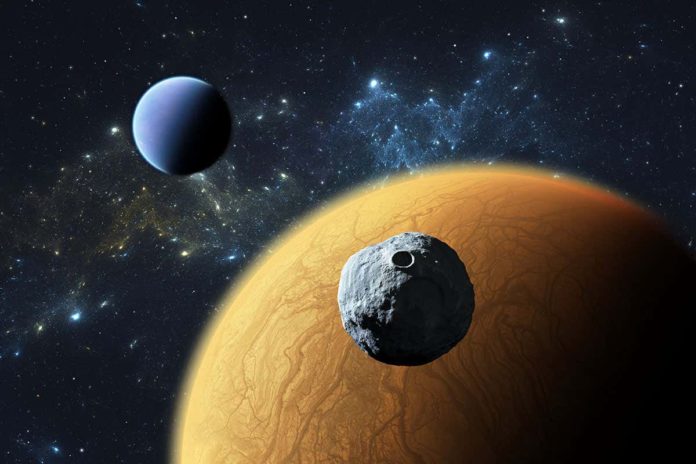Formally stated, Newton’s third law is: ‘For every action, there is an equal and opposite reaction.’ These laid a foundation for groundbreaking science.
However, Newton’s groundbreaking work also created a pickle that has baffled scientists for centuries: The Three-Body Problem. From its origins more than 300 years ago in Newton’s work on planetary orbits, the three-body problem has blossomed into a rich subject that continues to yield new insights for mathematicians.
The fundamental problem is to predict the motions of three bodies (such as stars or planets) mutually attracted by gravity, given their initial positions and velocities.
If all three objects are of comparable size and distance from the center point, a power struggle develops, and the whole system is thrown into chaos. When chaos happens, it becomes impossible to track the bodies’ movements using regular math.
Now, an international team, led by astrophysicist Dr. Nicholas Stone at the Hebrew University of Jerusalem’s Racah Institute of Physics, has taken a big step forward in solving this problem.
To come with a solution, scientists relied on discoveries from the past two centuries, namely that unstable three-body systems will eventually expel one of the trios, and form a stable binary relationship between the two remaining bodies.
They then used traditional mathematics to predict the planets’ movements. After comparing their predictions to computer-generated models of their actual movements, scientists found a high degree of accuracy.
Although the study does not represent an exact solution to the three-body problem, statistical solutions are still extremely helpful in that they allow physicists to visualize complicated processes.
Dr. Nicholas Stone, at the Hebrew University of Jerusalem’s Racah Institute of Physics, said, “Take three black holes that are orbiting one another. Their orbits will necessarily become unstable, and even after one of them gets kicked out, we’re still very interested in the relationship between the surviving black holes. This ability to predict new orbits is critical to our understanding of how these—and any three-body problem survivors—will behave in a newly-stable situation.”
Their findings were published in the latest edition of Nature.
